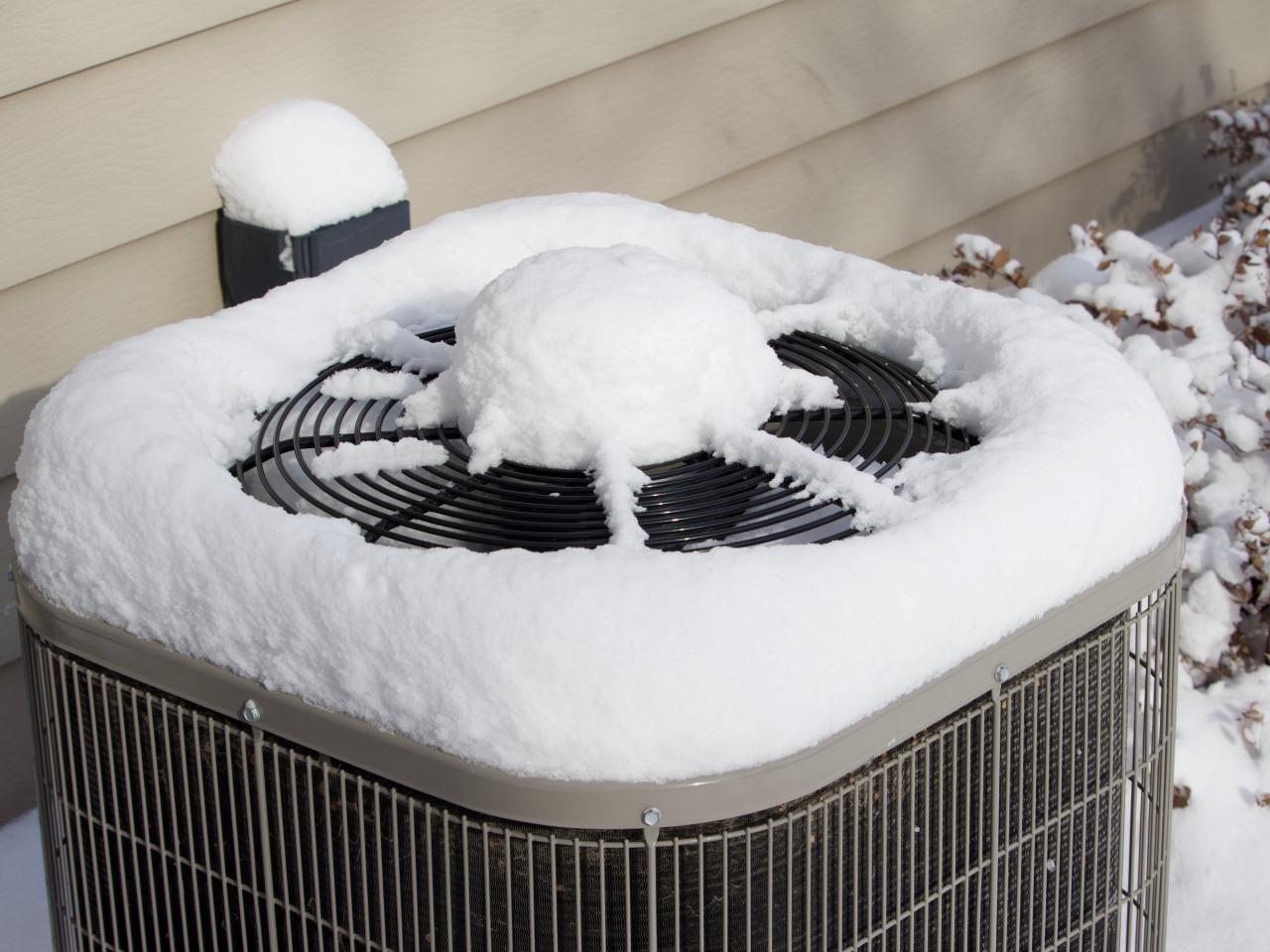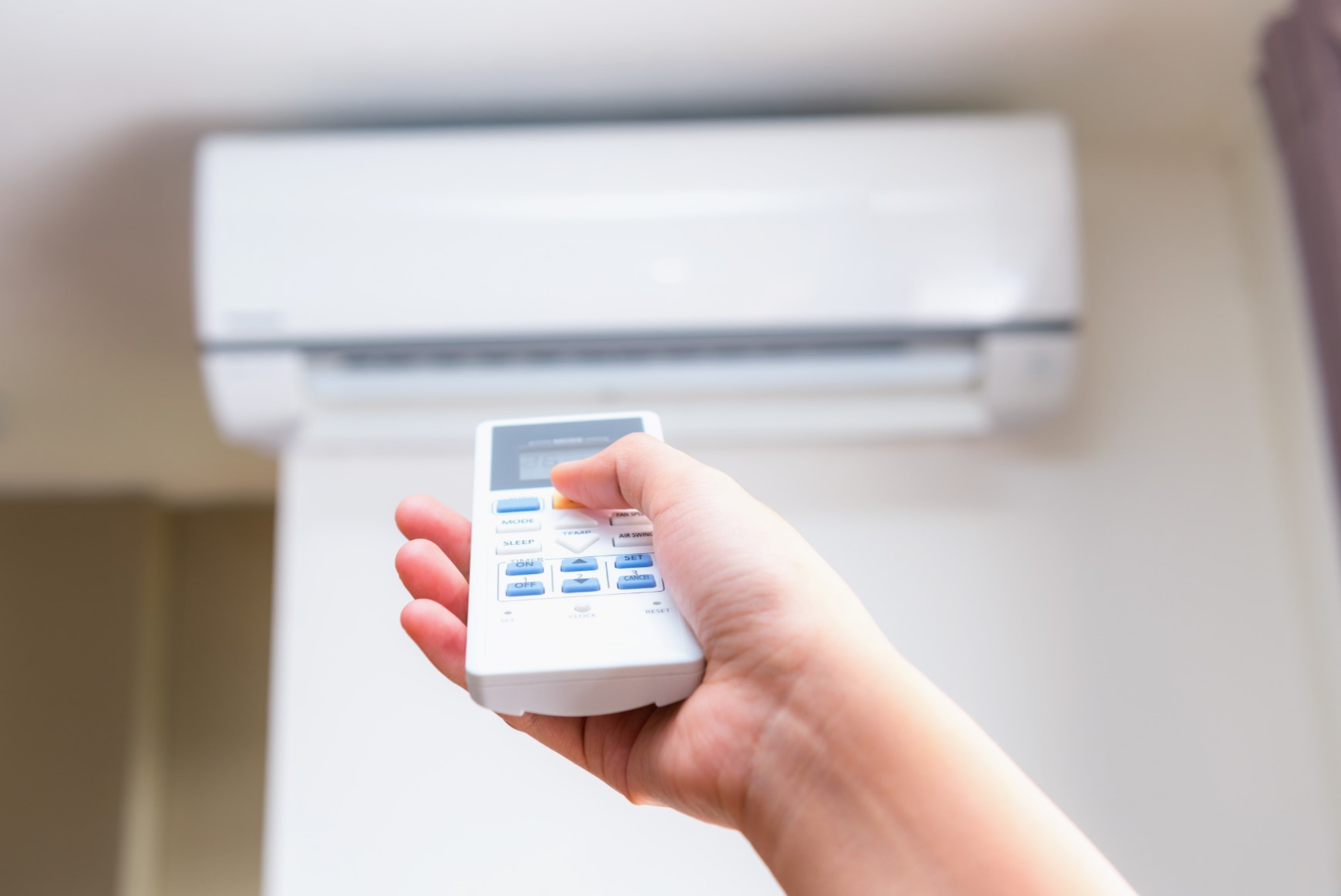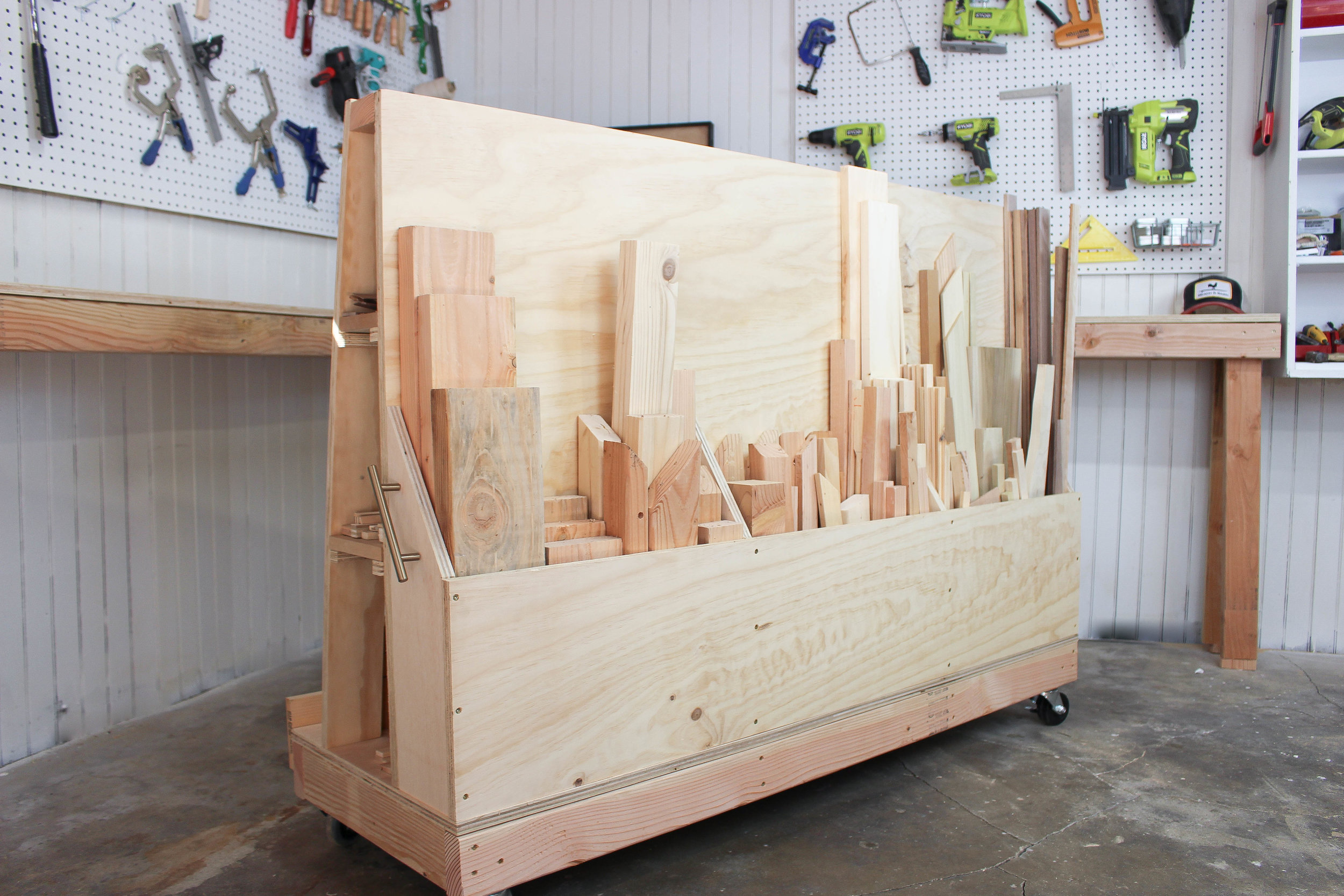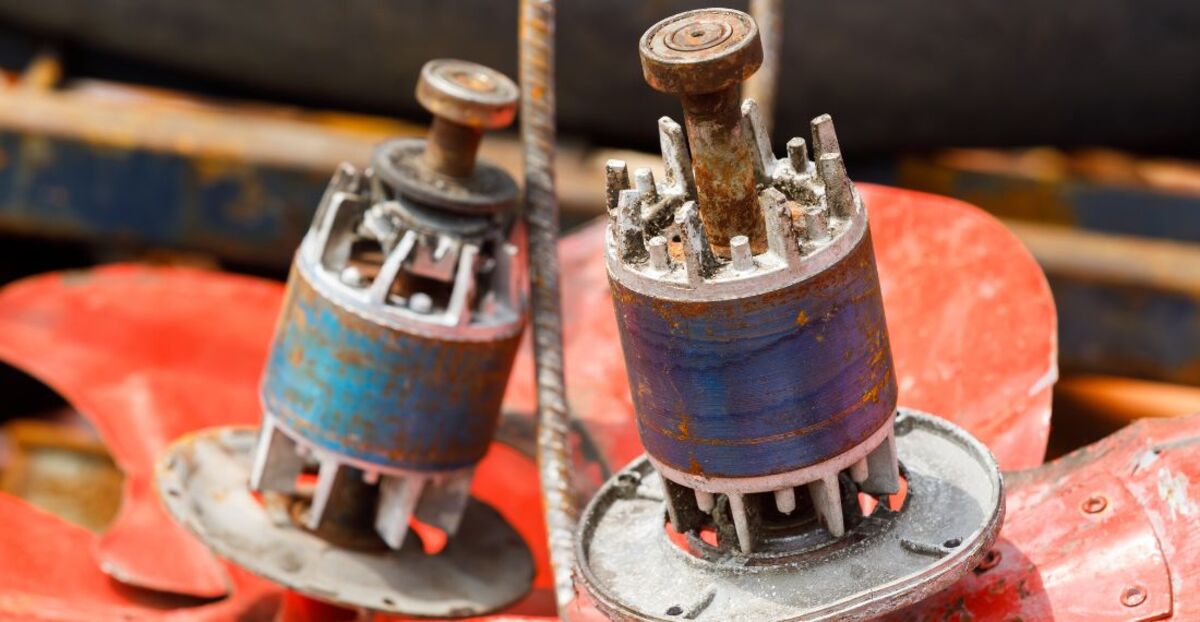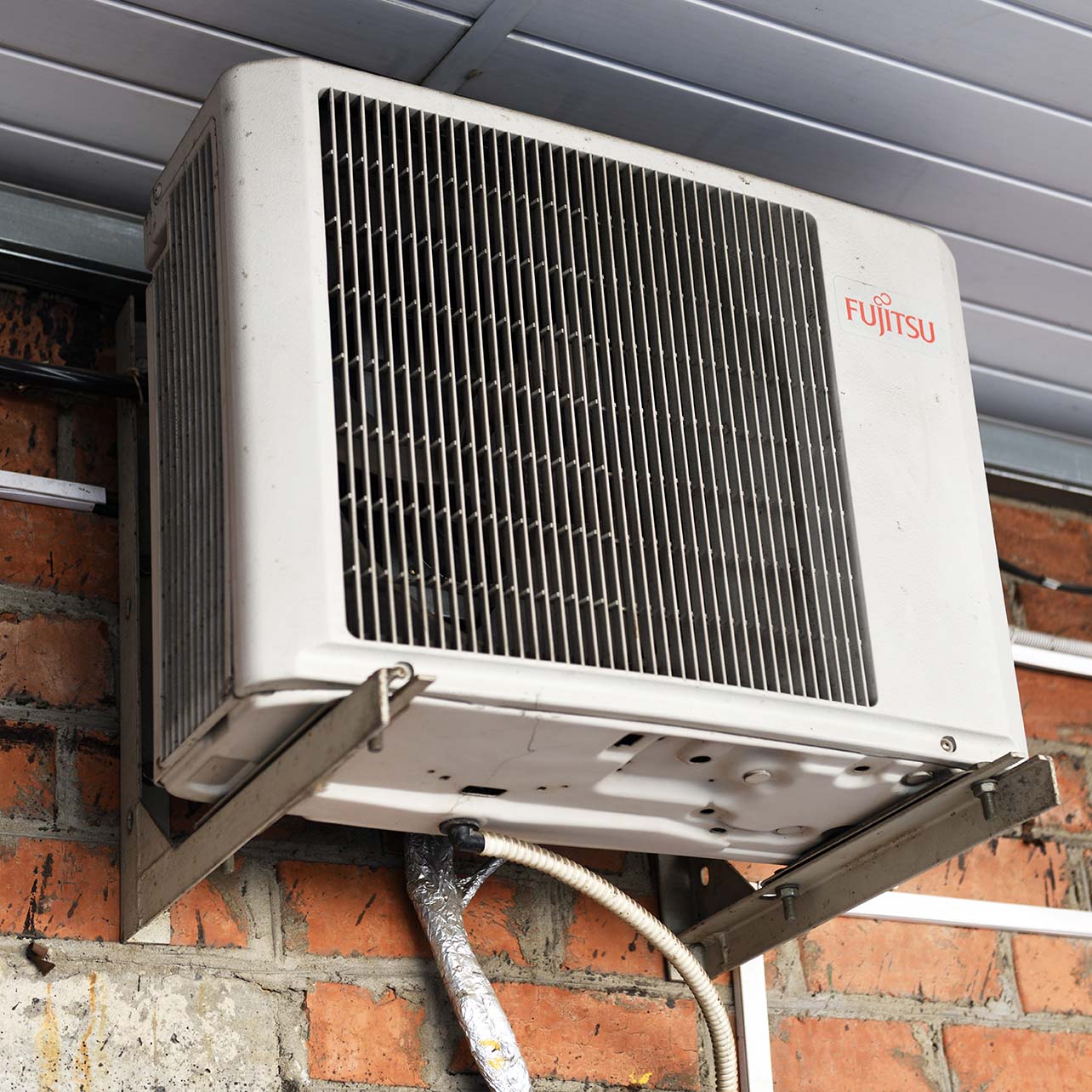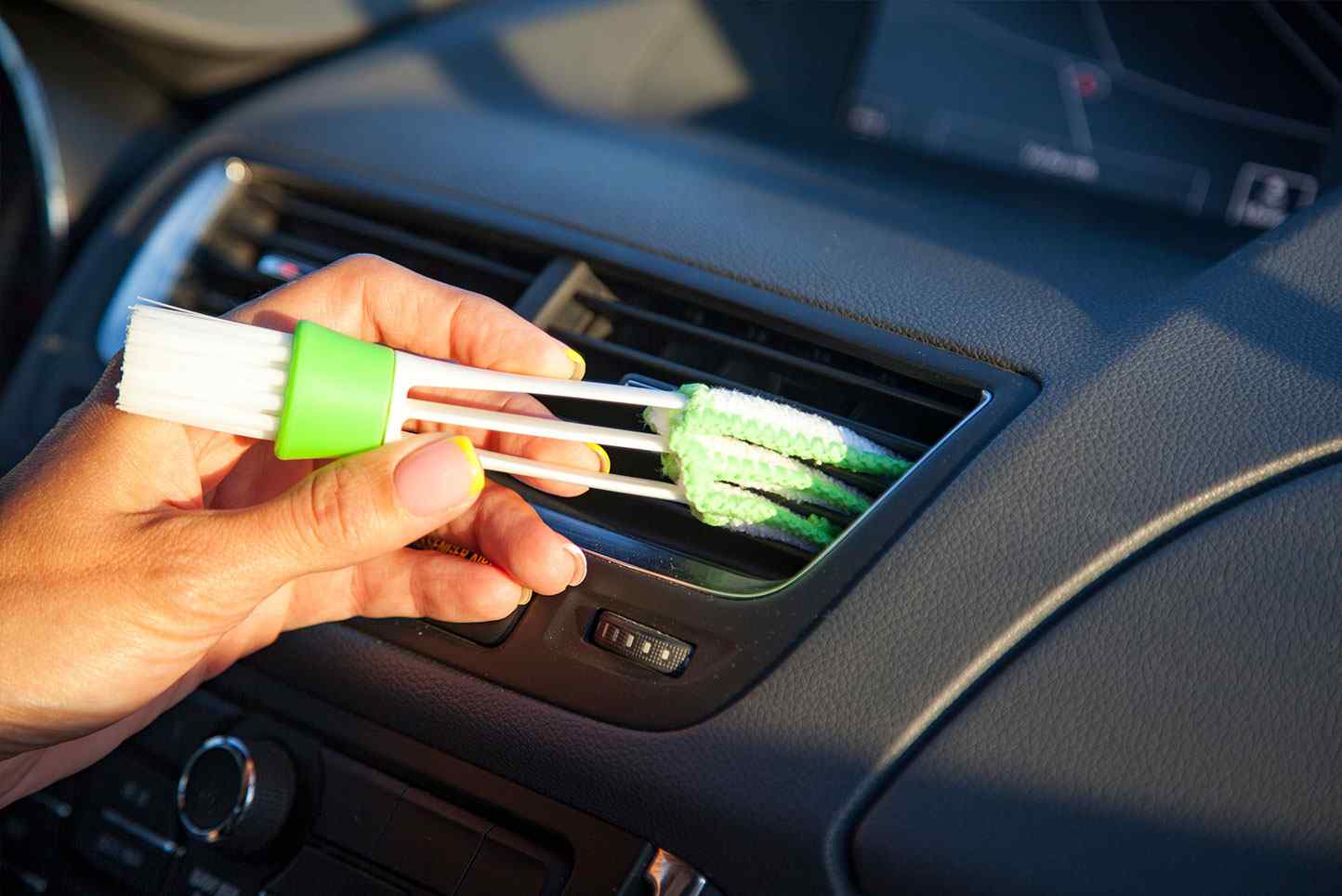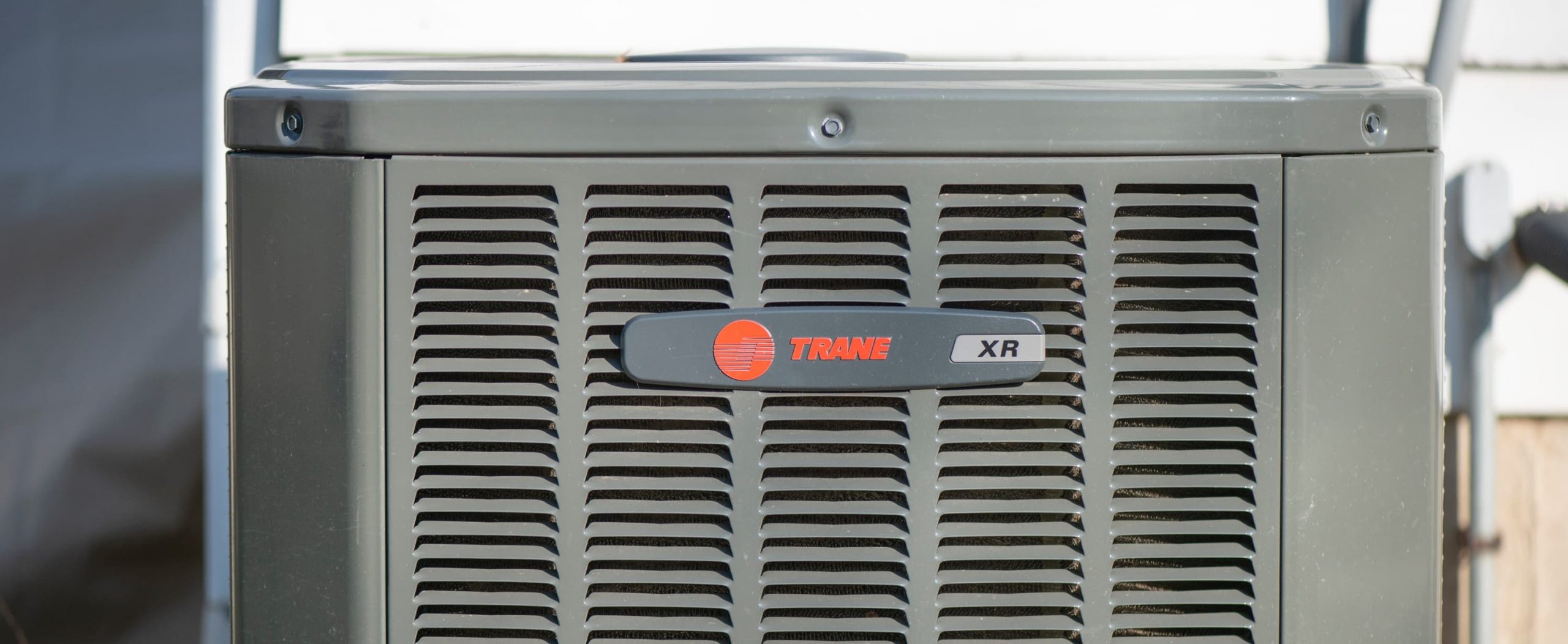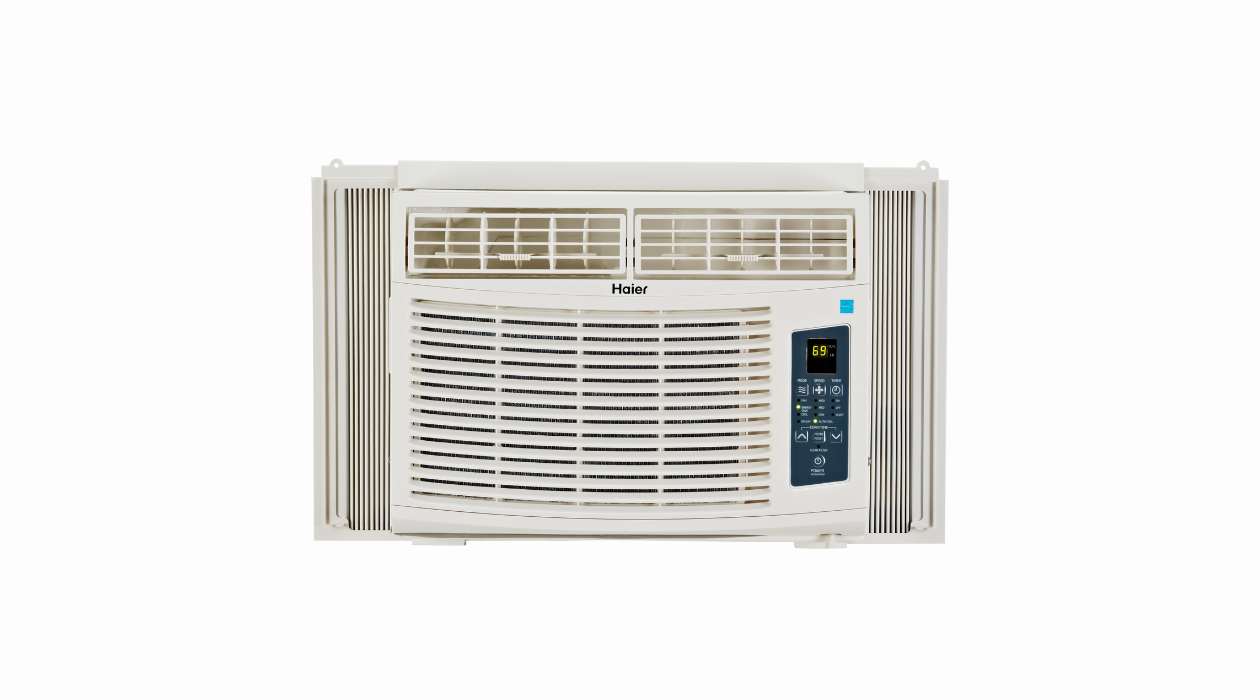Home>Home Maintenance>How To Scrap An Air Conditioner
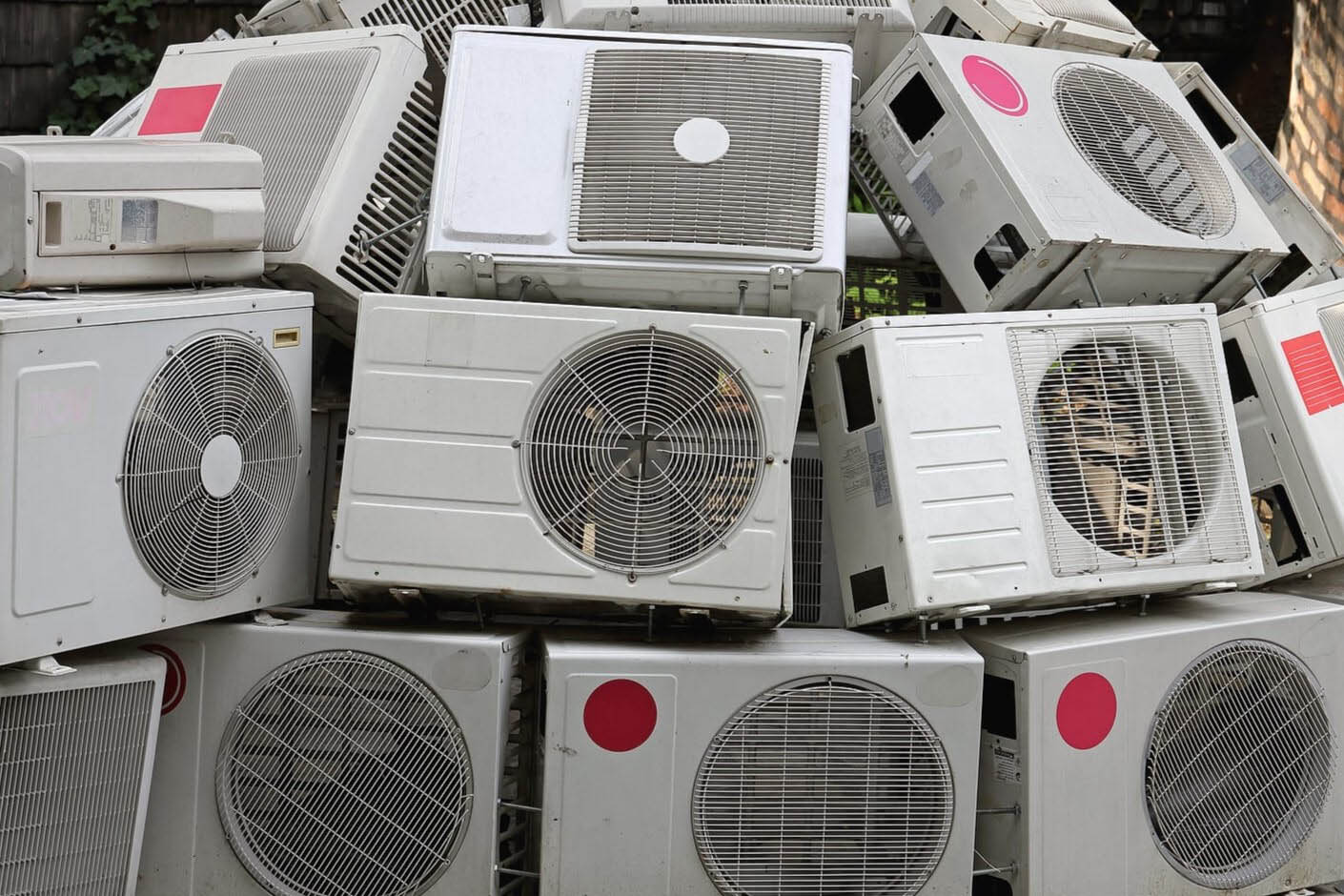

Home Maintenance
How To Scrap An Air Conditioner
Modified: October 20, 2024
Learn how to properly scrap an air conditioner as part of your home maintenance routine. Find step-by-step instructions and tips to safely and effectively remove and dispose of old AC units.
(Many of the links in this article redirect to a specific reviewed product. Your purchase of these products through affiliate links helps to generate commission for Storables.com, at no extra cost. Learn more)
Introduction
When it comes to home maintenance, understanding how to scrap an air conditioner can be a beneficial skill to have. Whether you are looking to upgrade your current unit, recycle the old one, or simply need to dispose of it properly, this step-by-step guide will walk you through the process. Not only will you be able to safely dismantle the unit, but you will also have the opportunity to salvage valuable materials such as copper and aluminum, which can be sold for profit.
Properly scrapping an air conditioner involves disconnecting it from power sources, removing various components, and disposing of them in an environmentally-friendly manner. However, before you begin, it is essential to gather the necessary tools and materials and take all safety precautions to prevent injuries or hazards.
In this article, we will discuss the tools and materials needed, safety precautions to consider, and provide a detailed breakdown of each step involved in scrapping an air conditioner. By following these instructions, you can confidently disassemble your old unit and make a positive impact on both the environment and your wallet.
Key Takeaways:
- Scrapping an air conditioner involves disconnecting it from power sources, removing valuable materials like copper and aluminum, and disposing of components responsibly. Prioritize safety, follow local regulations, and contribute to a sustainable future.
- By following safety precautions, separating and disposing of refrigerants properly, and recycling valuable materials, you can make a positive impact on the environment while safely dismantling an old air conditioner. Remember to check local regulations for proper disposal methods.
Tools and Materials Needed
Before you begin the process of scrapping an air conditioner, gather the following tools and materials:
- Work Gloves: To protect your hands from cuts, scratches, or other injuries.
- Safety Goggles: To shield your eyes from debris and potentially harmful substances.
- Adjustable Wrench: To loosen and remove nuts, bolts, and other fasteners.
- Screwdriver Set: Both flathead and Phillips screwdrivers may be required for different components.
- Tin Snips: To cut through metal components such as copper tubes and aluminum fins.
- Wrench Set: To disconnect the air conditioner from power sources and remove certain components.
- Container or Bag: For collecting and storing small parts such as screws and nuts.
- Refrigerant Recovery Equipment: If you plan on removing and recycling the refrigerant.
- Manifold Gauge Set: To check and measure the pressure of the refrigerant.
- Refrigerant Recycling Tank: To properly store and dispose of the recovered refrigerant.
Additionally, it is important to ensure you have a safe and well-ventilated workspace to work in. This will help minimize exposure to potentially harmful materials and fumes.
By having these tools and materials readily available, you will be well-prepared to successfully complete the scrapping process. Remember to always exercise caution and follow the appropriate safety measures to protect yourself throughout the entire procedure.
Safety Precautions
When scrapping an air conditioner, it is crucial to prioritize your safety. Follow these safety precautions to minimize the risk of injuries and hazards:
- Wear Protective Gear: Before you begin, put on work gloves and safety goggles to safeguard your hands and eyes from potential cuts, scrapes, or debris.
- Ensure Proper Ventilation: Perform the scrapping process in a well-ventilated area to prevent the accumulation of harmful fumes or gases that may be present in the unit.
- Disconnect the Power: Make sure the air conditioner is completely disconnected from any power sources before starting the dismantling process. This eliminates the risk of electrical shocks.
- Handle Refrigerant Safely: If you plan on removing the refrigerant, ensure that you have the necessary certification and equipment to handle it safely. Refrigerants are harmful to the environment and require proper disposal.
- Exercise Caution with Sharp Objects: Be mindful of sharp edges or components such as copper tubes and aluminum fins. Use appropriate tools, such as tin snips, to cut them carefully and avoid any injuries.
- Properly Dispose of Materials: After disassembling the air conditioner, dispose of the components properly. Research local regulations and guidelines for recycling and disposal to ensure compliance.
- Work with a Partner: If possible, enlist the help of a friend or family member to make the process safer and more manageable. They can assist with heavy lifting and provide an extra set of eyes for safety.
By adhering to these safety precautions, you can minimize risks and potential accidents during the air conditioner scrapping process. Always prioritize your well-being and take necessary precautions to ensure a safe and successful operation.
Step 1: Disconnecting the Air Conditioner
The first step in scrapping an air conditioner is to ensure that it is completely disconnected from any power sources. This is crucial for your safety and the proper dismantling of the unit. Follow these steps:
- Locate the Main Power Supply: Once you have identified the air conditioner unit, locate the main power supply that provides electricity to it. This may be a circuit breaker or an electrical panel in your home.
- Turn Off the Power: Switch off the power supply to the air conditioner by flipping the corresponding circuit breaker or shutting off the appropriate switch in the electrical panel. This will ensure that there is no electricity flowing to the unit.
- Confirm Power Disconnection: To be certain that the power is disconnected, attempt to turn on the air conditioner. If it does not turn on, you have successfully disconnected the power supply.
- Unplug the Air Conditioner: If the unit is connected to a power outlet, unplug it from the wall socket.
Once you have completed these steps, you can proceed to the next stage of dismantling the air conditioner. Remember to always exercise caution when dealing with electrical components and follow the appropriate safety procedures.
Step 2: Removing the Outer Casing
With the air conditioner safely disconnected from power, the next step is to remove the outer casing. The casing protects the internal components of the unit and needs to be taken off to access the various parts for scrapping. Follow these steps:
- Locate and Remove Screws or Fasteners: Inspect the outer casing of the air conditioner and identify the screws or fasteners securing it in place. Use the appropriate screwdriver to remove them. Keep track of the screws and store them in a container or bag for later use.
- Pay Attention to Clips or Latches: In some cases, the outer casing may be held together by clips or latches instead of screws. Carefully release these clips or latches to separate the casing sections.
- Gently Lift or Slide the Casing: After removing the screws or releasing the clips, gently lift or slide the outer casing off the air conditioner. Be mindful not to force it or damage any internal components in the process.
Once the outer casing is removed, you will have access to the internal components of the air conditioner. This step is essential for further dismantling and scrapping. Remember to handle the casing with care as it may still have sharp edges or contain residual dust or debris.
Read more: How To Scrap A Refrigerator
Step 3: Removing the Compressor
Once the outer casing is removed, you can proceed to remove the compressor. The compressor is a vital component of the air conditioner and contains valuable materials such as copper coils. Follow these steps to remove the compressor:
- Locate the Compressor: Identify the compressor in the air conditioner unit. It is typically a cylindrical shape and may be located near the back or bottom of the unit. It is connected to the refrigerant lines.
- Disconnect the Refrigerant Lines: The compressor is connected to the refrigerant lines through fittings. Use an adjustable wrench to loosen and disconnect the fittings, ensuring that you place a container underneath to catch any remaining refrigerant or oil.
- Remove the Mounting Bolts: The compressor is usually secured in place by mounting bolts. Use an appropriate wrench to loosen and remove these bolts, taking care to support the weight of the compressor as you do so.
- Lift and Remove the Compressor: Once the mounting bolts are removed, carefully lift the compressor out of the air conditioner unit. Be mindful of its weight and ensure you have a secure grip.
After removing the compressor, inspect it for any signs of damage or wear. If it is in good condition, you may consider selling it or recycling the valuable materials it contains. Proper disposal of the compressor is essential for both environmental and safety reasons.
Before scrapping an air conditioner, make sure to properly remove and dispose of any refrigerants to prevent environmental harm. Additionally, separate the different materials (such as copper, aluminum, and steel) for recycling.
Step 4: Removing the Copper Tubes
Once the compressor has been removed, the next step in scrapping an air conditioner is to remove the copper tubes. These tubes contain valuable copper that can be recycled or sold for profit. Follow these steps to remove the copper tubes:
- Identify the Copper Tubes: Locate the copper tubes within the air conditioner unit. These tubes are typically connected to the compressor and run through the unit, carrying refrigerant.
- Prepare for Removal: Put on your work gloves and use tin snips to cut the copper tubes at the appropriate points. Take care to avoid damaging any other components or nearby wires during this process.
- Drain Refrigerant and Oil: Once the copper tubes are cut, ensure that any remaining refrigerant and oil within the tubes has been safely drained into a designated container. Follow proper procedures for handling and disposing of refrigerants.
- Remove Copper Tubes: With the refrigerant drained, use the appropriate wrench to loosen and remove any fittings or clamps securing the copper tubes in place. Gently pull the copper tubes out of the air conditioner unit.
After removing the copper tubes, inspect them for any signs of damage or corrosion. If they are in good condition, you can sell the copper for recycling. Remember to handle the copper tubes carefully, as they may still have sharp edges and should be properly disposed of to minimize environmental impact.
Step 5: Removing the Aluminum Fins
After removing the copper tubes, the next step in scrapping an air conditioner is to remove the aluminum fins. These fins, also known as the condenser or evaporator fins, play a role in heat transfer within the unit. Aluminum fins can be recycled or sold for their scrap value. Follow these steps to remove the aluminum fins:
- Locate the Aluminum Fins: Look for the aluminum fins positioned around the copper tubes. They are typically attached to the condenser or evaporator coils.
- Prepare for Removal: Put on your work gloves and use tin snips to carefully cut through the aluminum fins. Take care not to damage the copper tubes or other components nearby.
- Remove the Fins: Once you have cut through the aluminum fins, gently separate them from the unit. Take extra caution to avoid any sharp edges.
- Clean the Fins (Optional): If you plan to sell or recycle the aluminum fins, consider cleaning them using a soft brush or compressed air. This can help remove dust or debris and improve their value.
After removing the aluminum fins, inspect them for any signs of damage or corrosion. If they are in good condition, you can sell them to scrap metal yards for recycling. Remember to handle the aluminum fins safely and dispose of any leftover materials responsibly.
Step 6: Separating the Refrigerant
Separating and properly disposing of the refrigerant is an important step in the scrapping process. Refrigerants contain harmful chemicals that can contribute to ozone depletion and climate change. Follow these steps to separate the refrigerant:
- Ensure Proper Certification: Handling refrigerants requires a valid certification due to their potentially hazardous nature. Make sure you are properly certified to work with refrigerants or consult a professional who is certified.
- Gather the Necessary Equipment: To safely recover and store the refrigerant, you will need refrigerant recovery equipment, including a manifold gauge set and a refrigerant recycling tank.
- Connect the Equipment: Attach the manifold gauge set to the air conditioner unit’s refrigerant lines. Ensure the connections are secure and follow the manufacturer’s instructions for proper setup.
- Recover the Refrigerant: Open the valves on the manifold gauge set to begin the recovery process. This will allow the refrigerant to flow from the unit into the recycling tank. Monitor the pressure readings on the gauge set to determine when the refrigerant has been fully recovered.
- Store and Dispose of the Refrigerant: Once the refrigerant has been recovered, close the valves on the manifold gauge set. Transfer the refrigerant from the recovery tank to a designated refrigerant recycling tank for proper storage and disposal.
It is important to note that refrigerant handling and disposal regulations may vary by region. Familiarize yourself with the local guidelines and ensure compliance when working with refrigerants. Properly separating and disposing of the refrigerant is essential to protect the environment and prevent harm.
Read more: How To Store An Air Conditioner
Step 7: Disposing of the Parts
After completing the process of scrapping an air conditioner, it’s important to properly dispose of the remaining parts. By disposing of the parts responsibly, you can help minimize environmental impact and ensure the safety of others. Follow these guidelines for proper disposal:
- Check Local Regulations: Research local regulations and guidelines regarding the disposal of air conditioner components. Different regions may have specific requirements for recycling, hazardous materials, and waste management.
- Separate Materials: Separate the various components into different categories, such as copper, aluminum, plastic, and other metals. This will make it easier to dispose of them appropriately.
- Recycle Copper and Aluminum: Copper tubes and aluminum fins can be recycled as scrap metal. Contact local recycling centers or scrap metal yards to find out their requirements and procedures for accepting these materials.
- Dispose of Plastic and Other Metals: Plastic components and non-recyclable metals should be disposed of according to local guidelines. This may involve placing them in designated recycling bins or arranging for proper waste disposal through local waste management services.
- Arrange for Hazardous Waste Disposal: If the air conditioner contains hazardous materials such as refrigerants, oil, or other chemicals, it’s important to handle them according to local guidelines. Contact your local environmental or waste management agency to learn about safe disposal methods for these substances.
By following these disposal guidelines, you can contribute to a cleaner environment and ensure that the components of the air conditioner are handled responsibly. Remember to always comply with local regulations and seek proper disposal methods for hazardous materials.
Conclusion
Scrapping an air conditioner is not only a practical way to upgrade or dispose of an old unit but also an opportunity to recycle valuable materials and contribute to a sustainable future. By following the step-by-step process outlined in this article, you can safely and effectively dismantle an air conditioner and properly dispose of its components.
Throughout the scrapping process, it is crucial to prioritize safety. Always disconnect the air conditioner from power sources and wear protective gear, such as gloves and safety goggles. Take caution when handling sharp objects or refrigerants, ensuring proper ventilation and adherence to local regulations. By following these safety precautions, you can minimize risks and potential accidents.
As you progress through each step, from removing the outer casing to separating the refrigerant, be mindful of the valuable materials you can salvage. Copper tubes and aluminum fins can be recycled or sold, contributing not only to your wallet but also to the reduction of waste and environmental impact. Proper disposal of non-recyclable materials and hazardous substances is equally important to ensure safety and environmental responsibility.
Remember to check local regulations and guidelines for recycling and waste management to ensure compliance with proper disposal methods. By doing so, you can play your part in preserving the environment and promoting sustainability.
In conclusion, scrapping an air conditioner requires careful planning, attention to safety, and a commitment to responsible disposal. By following the steps outlined in this guide, you can dismantle an air conditioner effectively and make a positive impact on both your home and the environment.
Frequently Asked Questions about How To Scrap An Air Conditioner
Was this page helpful?
At Storables.com, we guarantee accurate and reliable information. Our content, validated by Expert Board Contributors, is crafted following stringent Editorial Policies. We're committed to providing you with well-researched, expert-backed insights for all your informational needs.

